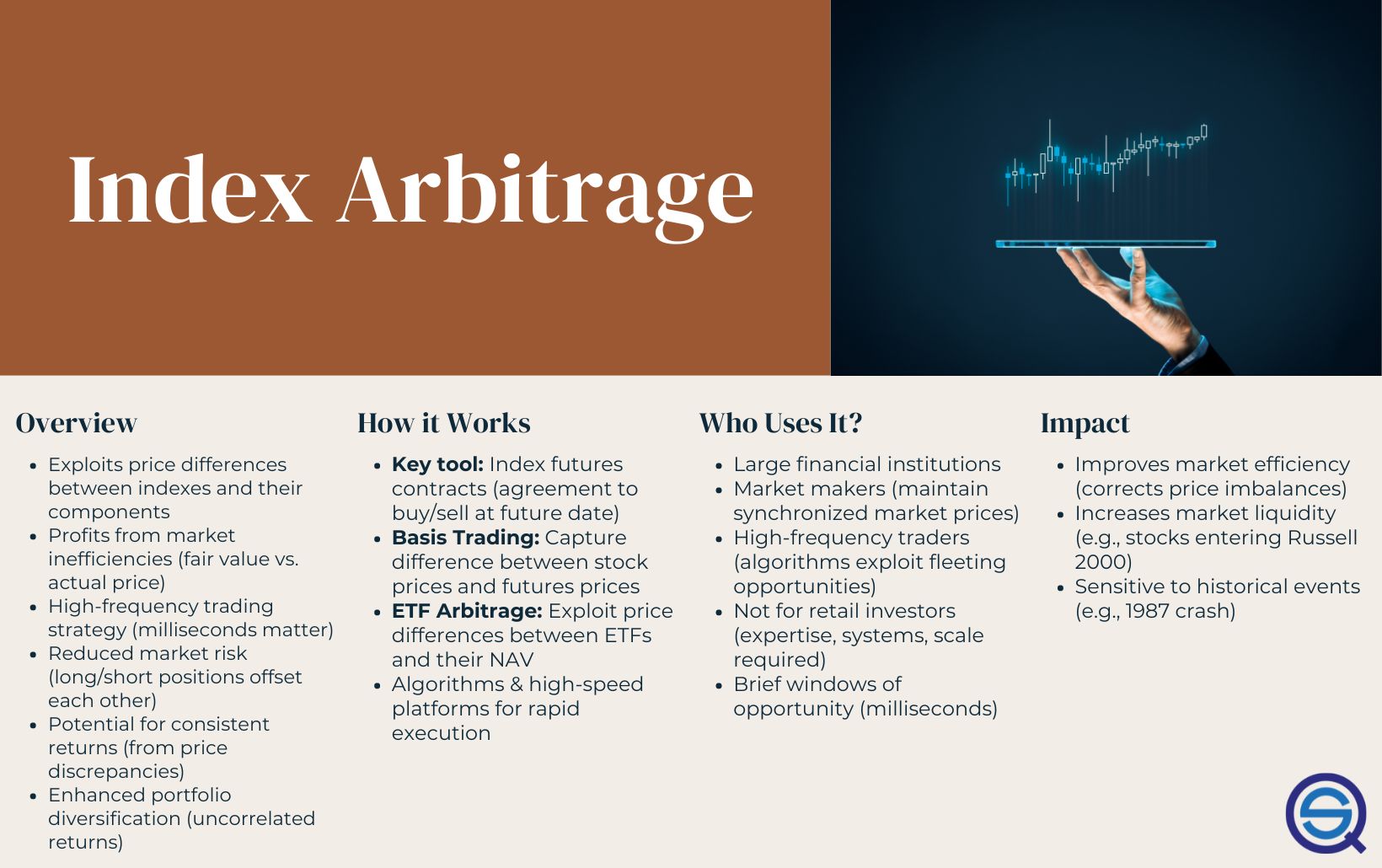Did you know that some traders believe they can predict market moves better than weather forecasts? Spoiler alert: they can’t! In the world of day trading, especially when it comes to arbitrage strategies, the right tools can make all the difference. This article dives into the best tools for day trading arbitrage, how to choose the right software, and essential features to look for. We’ll also explore the advantages of algorithmic trading, the role of APIs, and the importance of real-time data. Plus, discover free options, the top platforms for automated trading, and how to integrate multiple tools effectively. Stay informed on costs, risks, and common mistakes to avoid, ensuring your arbitrage strategies are as sharp as possible. Let DayTradingBusiness guide you through these vital aspects to enhance your trading experience!
What are the best tools for day trading arbitrage strategies?
The best tools for day trading arbitrage strategies include:
1. Trading Platforms: Use platforms like Interactive Brokers, TD Ameritrade, or TradeStation for low commissions and advanced features.
2. Market Data Feed: Subscribe to real-time market data feeds from providers like Bloomberg or Reuters for accurate pricing.
3. Algorithmic Trading Software: Tools like MetaTrader or NinjaTrader allow for automated trading and backtesting of arbitrage strategies.
4. Risk Management Tools: Use tools like Tradervue or Edgewonk to analyze trades and manage risk effectively.
5. News Aggregators: Services like Benzinga or MarketWatch provide timely news that can impact prices, crucial for executing arbitrage.
6. Arbitrage Calculators: Tools like Arbitrage Calculator or Betfair Arbitrage Calculator help identify price discrepancies.
7. APIs for Trading Bots: Utilize APIs from exchanges like Binance or Coinbase Pro to create custom trading bots for executing arbitrage trades efficiently.
Choose tools that fit your trading style and ensure they offer the speed and reliability needed for day trading.
How do I choose the right software for day trading arbitrage?
To choose the right software for day trading arbitrage, consider these factors:
1. Speed: Look for platforms with low latency to execute trades quickly.
2. Reliability: Ensure the software has a strong uptime record and minimal downtime.
3. Data Access: Opt for software that provides real-time market data and analytics.
4. User Interface: A clear, intuitive interface helps you make faster decisions.
5. Integration: Check if it integrates with various exchanges for seamless trading.
6. Cost: Compare fees—some platforms charge commissions per trade or monthly subscriptions.
7. Backtesting Tools: Good software should allow you to test your strategies with historical data.
8. Security: Prioritize platforms with robust security features to protect your funds.
Evaluate several options using demo accounts to find what fits your trading style best.
What features should I look for in day trading arbitrage tools?
Look for day trading arbitrage tools with real-time data feeds, fast execution speeds, and advanced charting features. Ensure they offer multiple asset classes, integration with various exchanges, and customizable alerts. A strong risk management feature is essential, along with backtesting capabilities to analyze past performance. User-friendly interfaces and mobile access can enhance your trading experience.
Are there free tools available for day trading arbitrage?
Yes, there are free tools available for day trading arbitrage. Some popular options include:
1. CoinMarketCap: Useful for crypto arbitrage, showing price differences across exchanges.
2. TradingView: Offers charting tools and a community for sharing arbitrage strategies.
3. Arbitrage Calculator: Websites like Arbitrage Trading Calculator help identify potential opportunities.
4. Binance and Coinbase Pro: Both offer free accounts with tools for tracking price variations in cryptocurrencies.
5. CryptoCompare: Compares prices across different exchanges to spot arbitrage chances.
These tools can help you identify and execute arbitrage strategies effectively without any cost.
How do algorithmic trading tools enhance arbitrage strategies?

Algorithmic trading tools enhance arbitrage strategies by automating the execution of trades, allowing for faster transactions that capitalize on price discrepancies. These tools analyze vast amounts of market data in real-time, identifying arbitrage opportunities across different exchanges or assets. They can execute trades within milliseconds, minimizing the risk of slippage. Additionally, algorithmic trading reduces emotional decision-making, ensuring trades are based on data-driven strategies. Overall, they increase efficiency and profitability in day trading arbitrage.
What role do APIs play in day trading arbitrage?
APIs enable day traders to access real-time market data, execute trades quickly, and integrate various trading platforms. They allow for automated trading strategies, which are crucial for arbitrage opportunities that require speed. By using APIs, traders can monitor price discrepancies across multiple exchanges, execute buy and sell orders instantly, and optimize their strategies based on live market conditions. This efficiency is essential for capitalizing on fleeting arbitrage chances.
How can I use charting software for arbitrage trading?
To use charting software for arbitrage trading, follow these steps:
1. Select the Right Software: Choose a charting tool that offers real-time data and supports multiple exchanges, like TradingView or MetaTrader.
2. Set Up Multiple Charts: Open charts for different markets or exchanges where you plan to identify arbitrage opportunities.
3. Monitor Price Differences: Use the software to track price discrepancies between assets. Set alerts for significant variances that signal potential arbitrage trades.
4. Technical Indicators: Apply indicators like Bollinger Bands or Moving Averages to spot trends and confirm entry points for trades.
5. Backtesting: Use historical data in the software to test your arbitrage strategies and refine them based on past performance.
6. Execution Tools: Integrate with trading platforms allowing quick execution of trades once a profitable arbitrage opportunity is identified.
7. Risk Management: Utilize charting tools to set stop-loss orders and manage your risk effectively during trades.
By leveraging these features, you can enhance your arbitrage trading strategies and capitalize on market inefficiencies.
What are the top platforms for automated arbitrage trading?
The top platforms for automated arbitrage trading include:
1. Binance: Offers a wide range of trading pairs and low fees, ideal for executing arbitrage strategies quickly.
2. Coinbase Pro: Known for its user-friendly interface and robust API, making it suitable for automated trading.
3. Kraken: Provides advanced trading tools and a secure environment for executing arbitrage.
4. Bitfinex: Features advanced trading options and high liquidity, which are crucial for arbitrage.
5. 3Commas: A trading bot platform that supports multiple exchanges and allows for automated arbitrage strategies.
6. HaasOnline: Offers customizable bots for arbitrage and a wide range of trading strategies.
7. Quadency: Combines multiple exchanges and provides automation tools for seamless arbitrage trading.
Choose a platform that fits your trading style and offers the necessary tools for effective automated arbitrage.
How do I integrate multiple trading tools for arbitrage?
To integrate multiple trading tools for arbitrage, start by selecting a reliable trading platform that supports API access. Use data aggregators to track price discrepancies across different exchanges in real-time. Implement trading bots that can execute buy and sell orders automatically based on predefined criteria. Utilize analytical tools to assess market trends and enhance decision-making. Finally, ensure your tools can communicate with each other, using webhooks or middleware, to streamline operations and minimize latency in executing trades.
What is the importance of real-time data in arbitrage trading tools?
Real-time data is crucial in arbitrage trading tools because it enables traders to identify price discrepancies across markets instantly. This speed allows for quick execution of trades before the opportunity disappears. Accurate and up-to-the-second information helps traders make informed decisions, minimizing risks and maximizing profits. In arbitrage, even a slight delay can result in lost opportunities, making real-time data essential for success.
How can backtesting tools improve my arbitrage strategies?

Backtesting tools enhance your arbitrage strategies by allowing you to simulate trades using historical data. This helps identify potential profit opportunities and refine entry and exit points. By analyzing past performance, you can assess the effectiveness of your strategy and make data-driven adjustments. Additionally, these tools can reveal market conditions that optimize your arbitrage execution. Overall, backtesting minimizes risks and boosts confidence in your trading decisions.
What are the risks of using day trading tools for arbitrage?
The risks of using day trading tools for arbitrage include market volatility, which can quickly eliminate profit margins. Execution risk is significant; if trades don't execute as planned, you may miss opportunities. Additionally, reliance on technology introduces the risk of system failures or glitches. High transaction costs can eat into profits, especially if trades are frequent. Lastly, regulatory risks may arise if tools don't comply with trading laws.
Learn about What Are the Risks of Using Non-Compliant Day Trading Brokers?
How do trading bots work for arbitrage strategies?
Trading bots for arbitrage strategies work by automatically scanning multiple markets for price discrepancies of the same asset. When a price difference is identified, the bot executes simultaneous buy and sell orders to capitalize on the profit.
These bots use algorithms to monitor price movements in real-time, ensuring they act quickly before the opportunity disappears. They can operate across various exchanges, leveraging differences in pricing to generate profits with minimal risk.
By executing trades at high speed, trading bots help day traders maximize gains from arbitrage opportunities that might only last seconds.
What costs should I consider when using arbitrage trading tools?
When using arbitrage trading tools, consider these costs:
1. Transaction Fees: Brokerage fees for each trade can add up quickly.
2. Spread Costs: The difference between buying and selling prices can impact profitability.
3. Data Fees: Subscription costs for real-time data feeds or market analysis tools.
4. Software Costs: Expenses for trading platforms or proprietary algorithms.
5. Slippage: Potential losses from price changes between order placement and execution.
6. Tax Implications: Capital gains taxes on profits from trades.
7. Interest Costs: If using margin, consider the interest on borrowed funds.
Evaluate these costs to ensure your arbitrage strategy remains profitable.
How can I stay updated on the latest tools for day trading arbitrage?
To stay updated on the latest tools for day trading arbitrage, follow these steps:
1. Join Online Communities: Participate in forums like Reddit or specialized trading groups on Discord. Engage with other traders to share insights on new tools.
2. Subscribe to Newsletters: Sign up for newsletters from trading platforms and financial news websites that focus on day trading and arbitrage strategies.
3. Use Social Media: Follow influential traders and trading technology companies on Twitter and LinkedIn for real-time updates on new tools.
4. Attend Webinars and Conferences: Look for online webinars or industry conferences that discuss advancements in trading technology.
5. Explore Trading Platforms: Regularly check popular trading platforms like MetaTrader, Thinkorswim, or TradingView for new features or tools designed for arbitrage.
6. Read Financial Blogs: Follow blogs dedicated to day trading and arbitrage for reviews and recommendations of the latest tools.
7. Test New Software: Keep an eye on software reviews and beta testing opportunities for emerging trading tools that can enhance your arbitrage strategies.
Learn about How to Stay Updated on Emerging Day Trading Patterns
What are common mistakes to avoid when using arbitrage tools?

1. Ignoring fees: Always account for transaction and withdrawal fees; they can eat into profits.
2. Lack of research: Relying solely on tools without understanding the market can lead to poor decisions.
3. Overtrading: Chasing small profit margins can result in significant losses—stick to a clear strategy.
4. Failing to set limits: Not using stop-loss orders can expose you to unnecessary risk.
5. Neglecting timing: Arbitrage opportunities can disappear quickly; act fast but with caution.
6. Using outdated tools: Ensure your arbitrage tools are updated for real-time data to avoid missing opportunities.
7. Emotional trading: Don’t let fear or greed influence your decisions; stay objective.
8. Overconfidence in automation: Tools can assist, but always verify results manually to avoid costly mistakes.
Conclusion about Tools for Day Trading Arbitrage Strategies
In conclusion, leveraging the right tools for day trading arbitrage is crucial for maximizing profits and minimizing risks. Selecting software with essential features, such as real-time data and backtesting capabilities, enhances your trading strategies. Remember to assess costs and integrate multiple tools effectively. Staying informed about the latest advancements in trading technology will also keep you competitive. For comprehensive insights and guidance on your trading journey, explore the resources offered by DayTradingBusiness.
Learn about Day Trading Arbitrage vs. Other Strategies